Building Buyer Personas: The Importance of Selling to a Targeted Audience
The dynamic multifamily industry is ever-evolving, driven by new regulations and technological advancements. As consumer behaviors shift, so must your leasing strategies align with today’s renters’ preferences.

Gone are the days when leasing efforts emphasized property features like high-speed internet or shared community areas. Modern success lies in focusing on who you are selling to so you can understand the unique desires of your targeted audience.
Consider the scenario of a leasing agent who employs the same sales pitch for both a Baby Boomer and a Millennial. This one-size-fits-all approach is likely to result in missing out on potential leases. Today, it’s crucial to be well-versed in your property’s amenities and spaces and what appeals explicitly to each potential renter. This approach is encapsulated in a buyer persona – a tool that refines your sales strategy around your audience, potentially turning a single lease into multiple.
Understanding Buyer Personas
Do you truly know your customers? Their workplaces, shopping habits, and interests are not just trivial facts but vital to understanding their purchasing decisions. A well-crafted buyer persona targets your multifamily marketing efforts effectively, ensuring you reach the right people at the right time and in the right way.
A buyer persona is a semi-fictional representation of your ideal customer based on market research and real data, capturing essential details like demographics, motivations, behaviors, and pain points. Such insights are invaluable for creating tailored content, designing amenities, and providing customer service that resonates with residents.

Building Buyer Personas
At Criterion.B, we specialize in branding for new developments, always starting with creating detailed buyer personas. Our process involves interviewing current and prospective residents to gain a comprehensive view of the organization. We delve deep into understanding where customers spend their time online, what resources they trust, and the challenges they face.
In our journey of building brand identities for multifamily properties, we recognize the importance of understanding residents and communicating distinctively with each target audience during the leasing process. We create specific, memorable personas – like “Empty Nester Nell” or “Baby Boomer Bob” – making it easier to connect personally when these ideal residents walk through your door.
Consider the following when building a buyer persona:
- A memorable name.
- Job titles and responsibilities.
- Detailed demographics.
- Goals and motivations.
- Pain points and challenges in the apartment industry.
- Technical experience and work environment.
- Realistic photos over stock imagery.
Leveraging Buyer Personas
Once your buyer persona is firmly established, it becomes pivotal to align your brand in a way that resonates with this ideal customer. However, the challenge often lies in catering to a property that appeals to a variety of demographics. For example, an urban property might simultaneously attract a tech-savvy Millennial professional and a leisure-focused retired Boomer couple. Each group represents distinct types of customers with unique preferences and expectations.
In such scenarios, developing detailed marketing personas becomes an invaluable tool. It allows you to customize the customer experience for each segment of your target customers, ensuring that your marketing campaigns and sales pitches are tailored to address the specific lifestyle and desires of each group. This tailored approach not only enhances the customer experience but also increases the likelihood of resonating with potential customers.
To address these diverse customer personas effectively, utilizing tools like Google Analytics can provide insights into the types of customers interacting with your online content. This data can guide your product development, helping to shape the products and services offered in a way that appeals to each distinct group. Moreover, a free buyer persona template can be a great starting point for businesses looking to create content that appeals to various customer segments.
Incorporating buyer persona templates into your marketing strategy allows for a deeper understanding of your potential customers. It aids in crafting marketing campaigns that speak directly to their needs and preferences. As a result, your sales team can approach each lead with a more personalized and informed strategy, greatly enhancing the effectiveness of your sales efforts.
Furthermore, these personas play a crucial role in guiding content creation. By understanding the motivations, pain points, and interests of your different customer personas, you can create content that is both engaging and relevant to each group. This approach not only improves the effectiveness of your marketing efforts but also supports a more strategic and customer-centric approach to product development.
Overall, the use of detailed buyer personas in tailoring the leasing experience and marketing efforts ensures that your multifamily property can effectively connect with a diverse range of customers, enhancing both the customer experience and the success of your property in the competitive market.
The Key to Multifamily Marketing
Creating a buyer persona might seem like a meticulous task, but it’s a strategy that humanizes your audience and streamlines your marketing efforts. By understanding what renters value most, you can align your multifamily marketing strategy more effectively.
To get started, download our multifamily persona worksheet and develop a buyer persona that accurately reflects your renters’ needs and preferences, ensuring your commercial real estate marketing strategy is as effective and resonant as possible.

Promoting a product without knowing who your target audience is (or what they want) is an impossible task. You will just be making decisions based on what you think they want. That is not sustainable over the life of any brand.

That’s why creating user personas is important for any company that wants to grow. The research involved in putting together a user persona report will not only help you understand your target audience it will also help you create a better product for them.
Things like life goals, education level, age, and common problems will determine how you serve these customers in the future — especially when making marketing decisions. Even small factors like location or salary can influence how those people make decisions and, in turn, use your product.
User personas are important for creating a targeted multifamily marketing plan and influencing your growth strategy.
Not sure where to start? Here are 20+ user persona examples, tips, and templates to help you create some amazing user persona examples from scratch:
1. Create 3 to 5 unique and detailed personas to start.
If you are creating your first customer or user persona guides, I would design one for each of your main customer groups. Most resources recommend between three and five distinct personas, and I am inclined to agree.
For example, Michael Szczepanski created four unique user persona examples below; they just happen to be dogs. This is the perfect range to ensure you cover all your bases and gain insight without getting too in-depth.
2. Highlight products your audience already uses in your industry.
Including well-known products in a user persona guide is a simple way to add a wealth of secondary information. For example, if this user only buys Apple products and only shops at Whole Foods, you can make a lot of assumptions rather quickly.
Or, like in this persona guide example for a reading app, the books they love can help shape that persona. I mean, a user who reads romance novels at home will have different needs than one who reads only comics on the go.
3. Use a customer journey map template to help create each persona.
If you have trouble putting together your user personas, a customer journey map may help. This is a great way to look at the customer’s journey from a different angle and hopefully come out with better insight.
Like in the example below, you can learn a lot about your personas by studying how they use your product.
4. Use icons to emphasize information in your persona guides.
I am a huge fan of icons and illustrations, especially infographics. These little visual helpers allow you to add context and information rather effectively. Plus, people are relatively familiar with icons, so there is no learning curve.
Because of that, they can also be used on a persona guide to illustrate a complex concept or idea. Just take a look at the below example there are a plethora of useful icons. From the music icons in the interest section to the ones that help illustrate and organize the guide.

5. Find a common metric to track across your different personas.
When analyzing your different user personas, you should try to have at least one similar metric between them. Otherwise, you will compare abstract things like their bio, keywords, or some other written metric.
Something like a score or point can generally be compared across the board. Then, you can use icons like stars to visualize these metrics, like in this user persona example from ABWS Digital.
6. Keep layouts consistent between persona guides.
Other than creating one of the most unique persona examples in this collection, this example from Shopify does something exceptionally well, almost as well as they know e-commerce, entrepreneurship, and inventory management. The designers kept the layout consistent throughout each card.
Consistency is key when creating a compelling user persona because it allows quick comparisons. It is inefficient to have people aimlessly search for information because the designer wanted to switch things up.
7. Visualize persona data memorably.
Providing real stats and metrics is a fantastic way to take your persona guide to the next level. But make sure that the data you are presenting is useful and memorable.
As seen in the example below, you can achieve this by creating data visualizations. By combining icons with important data, the designers could create a visual that can be easily recalled.
If you have little (or any) experience creating data visualizations, starting with a user persona guide template can help.
8. Highlight the differences between your personas.
Different people have different goals, problems, and preferences. To help keep your marketing campaigns segmented and your product features focused, it can be helpful to highlight the differences between your personas.
Take a look at how this user persona example uses pie charts and custom illustrations to show the differences between each type of person:
9. Turn your user persona guide into an infographic.
Infographics are an outstanding way to communicate visually. So, why not turn your persona guide into an infographic?
The designers at LOLSMG used visuals like icons, decorative fonts, and conceptual images to make their user persona guide more engaging. Plus, there are already a ton of free infographic templates that you can use as a starting point.
10. Make sure the designs reflect the personas.
To make your user persona guides more memorable, use design elements that reflect each individual persona. Consider how you can use design to reflect their age, jobs, and interests. For example, if one of your personas is a 20-something in the tech industry, use bold, quirky fonts or colors in their persona guide.
Look at this gamer user persona and how the design reflects his interests and problems.
11. Research your users’ motivations and pain points, then highlight them.
When you start the research into specific personas, it is important to look at the motivations and pain points. A few guides I saw while collecting user persona examples focused on only one or the other.
To truly create an accurate user persona, you must thoroughly research your users’ motivations and pain points.
For example, this highly qualified influencer finds it difficult to attend events (maybe because he’s a cat), and maybe your product can help them out.
12. Include goals that your product or service may not directly impact.
The goals that your product or service directly impacts should be featured in user persona examples. But you should also take it a step further and highlight the other goals this persona may have.
Maybe your product is a fitness app, like in the example below, which features traditional and nontraditional health goals. These indirect goals may not be something your product will influence or impact, but they are still important in understanding the persona.
13. Begin your user persona guide with a helpful introduction paragraph
Part of creating a well-rounded user persona is giving them a backstory. It does not have to be much, but enough to help highlight key traits or aspects. You can use this intro to talk about what makes your personas tick. Outline why your company should care about this persona. Or make it purely biographical, like in the user persona example above.
I like this approach because you can use it to tell a real story instead of just listing facts and figures.
14. Design a fully visual persona.
There are no rules that say your user persona has to be a document, a poster, or even an infographic. Honestly, it can be whatever helps your brand build better experiences for your users.
If you can create one that does not fit into traditional conventions, as Jason Travis did below, then more power to you. I mean, with just a handful of items, he was able to paint a rich tapestry for each user.
15. Include details like geographic location and salary range.
Location and salary are extremely useful, especially if your customer base is primarily in one geographic region. This user persona example from GB Lee featured both, but some guides omitted it completely.
Consider how different customers live in LA and NYC or how different the rent is when living in San Francisco and Kansas City.
Those are massive things you cannot ignore, or your user persona guide will be a wasted effort.
16. Use sliding scales to define a user accurately.
Generally speaking, the more specific your user persona guide is, the better. Take a look at the previous tip to see a few of those concrete factors. However, other sections or factors are better defined if there is a little more gray area.
In this example, personality traits are more accurate if they are graded on a scale. It is better to say that Rory is a bit more introverted than extroverted. Labeling him at either extreme would paint an inaccurate picture.

17. Assign each user persona example a real name.
Thinking about these personas as actual customers or people can make developing personas more effective. That is why assigning them a real name is so essential.
Take a look at this user persona example, if they had used a single keyword or something like “Runner McGee,” the facade is broken immediately.
Then, you risk your user persona guide being another document your team ignores. Your personas should guide your multifamily marketing plan.

18. Break down a day in the life of your user persona.
To help think like your persona, it can be helpful to imagine what a day in their life is like. An easy way to illustrate a daily or weekly routine is by using a timeline infographic. You can use icons to illustrate the different activities they do or obstacles they face.
Like Monica Miller did in the user persona example below, you can impart much information in a rather small package.
19. Present all personas guides on one page for easy comparison.
Comparing the similarities and differences between your personas can be helpful when creating your marketing plan. You can make comparisons easily by showing your personas on one comparison sheet (or even a comparison infographic).
In this user persona example, they presented all three personas on one graphic. You can compare each aspect in milliseconds instead of swapping screens or shuffling papers.
20. Summarize each user persona with a few keywords.
What drives each of your user personas? Try and summarize them in a few powerful keywords.
These user persona examples come from our friends at Mailchimp. I can confidently say they are my favorite in this roundup.
Not only are they visually unique and can be used as posters around the office, these guides also tell you all you need to know about each persona with only a few keywords.
21. Highlight social media or tech use.
The social media platform or technology a persona uses daily should be included in each guide. This tip (and user persona example) is especially useful for any internet-based brand or company. Not knowing both of those factors could spell trouble from the beginning because if we were to target one of these personas on the wrong device or platform, all our efforts would be a waste.
So, take the time to find out where your personas are hanging out and what device they use to do that.
22. Never use recognizable faces or celebrity photos.
I mentioned already that you should give each persona a real name, and the same can be said when using images or headshots.
Creating the impression that this is a real person is key, so do not use celebrities, people from your office, or recognizable faces. This could lead to people subconsciously adding traits from these people to the personas.
In this user persona example, they did the right thing and used a random person. It is almost like you are looking at a blank slate, which is ideal.
Now that you know how to create an ideal user persona, it’s time actually to go do it! These are going to take a while and involve a lot of research but do not get discouraged. In the end, they will be worth it because you will be able to help your customers better. When in doubt, start with a persona guide template.

Ryan McCready is the Content Editor and Design Analyst for Venngage. He graduated from the University of Arkansas with a degree in economics and international business.
Reaching your buyer persona in the right place at the right time is paramount to marketing success, and marketing analytics are essential to the evaluation stage of any marketing strategy. However, if not collected diligently, they are of no use.

If you are not achieving your marketing goals or seeing the results you want from your efforts, it’s time to adjust your strategy. The following are a few good practices to make habits that will increase your data’s relevance:
1. Identify Your Problem Areas
First, decide where you could use some improvement. Focus your efforts on a few specific areas such as social media engagement or website traffic to track relevant data for your business.
2. Create SMART Goals
To prove your analytics efforts are worth your time, you have to set SMART goals — Specific, Measurable, Achievable, Relevant, and Timely. This way, you can continue to track your progress in comparison to your end goals. Without this step, there is no way to assess the performance of the strategy you have put in place.
3. Stay Committed
Now that you have the groundwork set, here comes the hard part — staying fully committed and on track with the goals you set. Tracking and reporting your analytics data weekly as well as monthly, quarterly, and yearly is crucial to finding different trends, so stay committed. Pausing your efforts or adding multiple layers to your pre-constructed plan will only lessen your impact.
4. Track Your Marketing Analytics Results
Follow different trends in your marketing analytics data and make adjustments accordingly. Then, track and report the results to find new insights. Luckily, there are a variety of marketing analytics tools to help you with this crucial step.
5. Report and Repeat
Successful marketing is a long, winding road of strategy, testing, retesting, and careful planning. When you have met your goals, report your data to your team and set new ones.
Trust the Experts to Become the Experts
Use marketing analytics to make informed decisions about the time, place, and manner in which you advertise. This way you can focus your ad spending in specific areas, to better reach your target audience and improve the value of your marketing.
Remember, if implementing and executing a successful marketing campaign is not your business’ specialty, you do not have to go at it alone. You can leave the heavy lifting to an inbound marketing agency. You spent time and energy creating a brand that has a unique value proposition, so now it is time to trust the experts to develop a marketing mix that sends the right message to the right people.
Not sure if your marketing strategy needs the boost of working with an agency? Check out our worksheet that helps you identify where your business’s marketing strategy stands!

Revolutionize Your Multifamily Marketing Plan: Say Goodbye to Cold Calling
Cold calling has long been a staple in sales strategies, but in today’s multifamily marketing landscape, it’s becoming an outdated and inefficient approach. As buyers have more access to information than ever before, the days of the cold call, where you hope to reach a prospect who has never heard of your property, are increasingly behind us. Let’s explore why cold calling no longer works and how to shift your focus to a more effective multifamily marketing plan.
The Problem With Cold Calling Today
Today’s consumers have grown accustomed to controlling the flow of information. Prospects no longer want to receive unsolicited calls. Instead, they prefer researching their options online at their own pace. The internet allows multifamily buyers to gather information and form their opinions long before they engage in any form of direct communication.
This shift makes traditional cold calling less effective. Buyers can bypass sales pitches by finding answers to their questions online, and when they are ready to take action, they’re more likely to reach out to properties that have already built a relationship with them through strategic online content. This is where the power of content-driven marketing comes into play.

However, time and time again, we see industry professionals who cannot seem to shake the old-school approach. Something to keep in mind is that consumers are not the only ones with access to the internet. You can also use it to stay updated on your target customers’ issues and formulate ways to resolve them.
With access to robust market data and advanced tools, multifamily marketers now can engage prospects with content that aligns with their needs. By understanding your multifamily buyer persona and creating a multifamily brand story that resonates with them, you can generate warm leads that come to you, rather than having to interrupt them with a cold call.
As a commercial real estate marketing agency, we understand the power in numbers.
Content Is the New Cold Call
As much as outbound calls have been the cornerstone of many sales processes, inbound multifamily marketing offers a smarter way to engage prospects. With multifamily content marketing, your property can provide the information prospects need to make informed decisions. Inbound marketing attracts buyers by creating content that speaks directly to their needs and answers their questions before they ever pick up the phone.
Today, more than 75% of consumers say receiving customized content makes them more likely to consider a brand, and 78% are more likely to purchase after engaging with personalized communications. On the other hand, cold calling is a generic, one-size-fits-all approach that fails to meet the buyer where they are. Multifamily inbound strategies provide a more tailored experience, engaging prospects with relevant content that educates, informs, and builds trust.
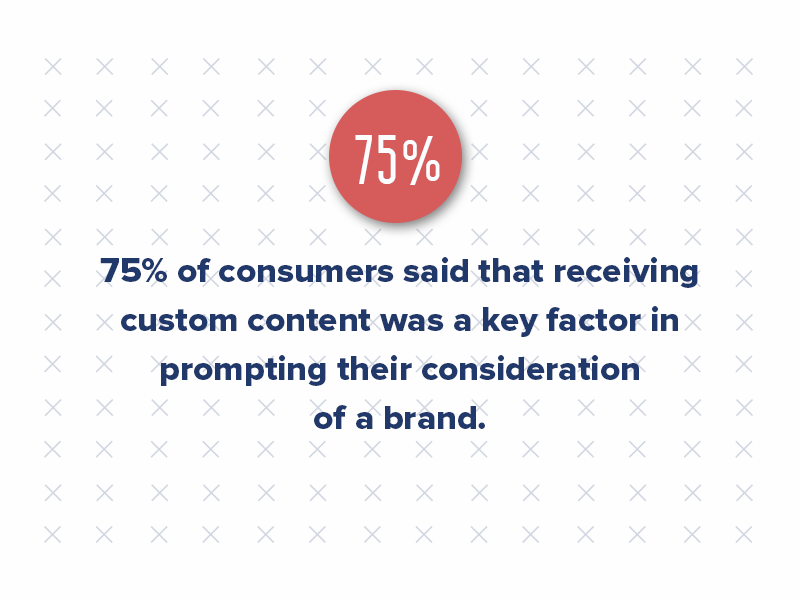
As a multifamily branding agency, we know that the effectiveness of marketing today relies on content that’s personalized and valuable. Instead of cold calling to persuade prospects to consider your property, you can bring them in with content that addresses their questions, pain points, and goals. From blog posts and white papers to video tours and social media engagement, multifamily branding done well serves as a tool to nurture leads before they ever reach out.
How to Shift Away From Cold Calling: 3 Effective Alternatives
So, how do multifamily marketers successfully build relationships without relying on the outdated practice of cold calling?
Here are a few strategies that can transform your sales approach and increase multifamily lead generation:
1. Network at Industry Events
Building relationships through networking is one of the most effective ways to grow your brand presence without the need for cold calling. Attending events like the National Apartment Association Apartmentalize or the Texas Apartment Association One Conference allows you to engage with other industry professionals and prospective clients.
Networking isn’t about pushing a sale but building trust and rapport. Establishing yourself as an authority in multifamily marketing can lead to speaking engagements, increased credibility, and more leads down the line.
2. Contribute Content to Relevant Publications
Content is a powerful asset in inbound multifamily marketing, and one of the most accessible avenues to build a sense of authority. Publishing articles, guides, and blog posts that answer common renter questions builds your multifamily brand identity and establishes you as an expert.
For example, creating content focused on your city’s “Best Neighborhoods for Young Professionals” or an in-depth guide to moving into an apartment helps foster a relationship with your audience. As your content becomes more aligned with what your multifamily buyer persona is looking for, you’ll see organic traffic rise, leading to more inbound leads without the need for cold calling.
Submit an article to a magazine publisher you know your customers will read, or create your blog. Furthermore, you don’t always have to publish your work. Reposting another blog by a reputable source will help gain attention and credibility.
At Criterion.B, our multifamily marketing plan includes guest posts and contributing articles to industry publications. If you take a quick look at our blog, you might notice a couple of guest posts now and then. These are relationships we are continually building. Our team also regularly publishes content for several publications, including the National Apartment Association, Texas Apartment Association, Units Magazine, Multifamily Insiders, and more.
3. Engage Past Customers and Build Relationships
A strong, organic way to grow your business is to focus on existing clients and encourage repeat business. The relationships you build will be at the core of your business. It’s as simple as that. Many of our most successful projects stem from previous clients who contacted us again after experiencing the value of our services. People are willing to pay a higher price when they know they are getting good service.
The multifamily brand story and brand experience you’ve built should continue to resonate with clients over time, keeping them engaged. Building relationships through consistent follow-ups, personalized emails, and providing value through updated services can keep your brand top-of-mind when they’re ready for more. While one customer might not have the budget, resources, or capabilities to become your customer right now, this could change in a year or two, so always keep that line of communication open.
Shifting Your Multifamily Marketing Plan for Success
As a multifamily marketing agency, we understand the need to adapt to an ever-changing digital landscape and adjust your multifamily marketing plan. While cold calling once worked, the modern approach requires a strategic shift toward multifamily inbound marketing. The days of purely relying on outbound efforts are fading as more prospects expect to research and decide based on the content you create. Whether through blog posts, SEO-optimized websites, social media campaigns, or email marketing, the focus is on nurturing relationships, providing valuable insights, and meeting prospects where they are.
With multifamily branding, it’s about creating content that not only speaks to renters’ needs but builds trust and establishes authority in the industry. Once your property has built up a reputation through consistent, engaging content, your multifamily marketing plan becomes less about selling and more about building a genuine relationship with your customers. Through multifamily graphic design, your property can create a compelling online experience that connects with prospective renters on a deeper level.
In the long run, shifting your focus to inbound strategies and moving away from cold calling will lead to more engaged prospects, stronger relationships, and a more sustainable approach to multifamily marketing. The key is creating a unique brand that resonates with your audience and using the right digital marketing tools to amplify your reach and connect with prospective renters before they even need to make a call.
Remember, it doesn’t matter which multifamily marketing plan or strategy you use as long as you treat the customer with the utmost importance.
Here Are the Missing Pieces in Your Multifamily Marketing Plan
Content marketing in the multifamily industry has long been an afterthought — nice to have but not essential. But as multifamily marketing trends shift, it’s clear that how we create content can no longer be an experiment or an afterthought. It’s the strategy.
Property management teams relied on static flyers, cookie-cutter ads, and generic website pages for years to engage with prospective renters. Today, that’s simply not enough.
Multifamily inbound marketing is about meeting renters where they are — searching, scrolling, and researching online. That means an effective multifamily content marketing strategy must be data-driven, omnichannel, and hyper-relevant to a specific multifamily buyer persona.
At Criterion.B, we’ve worked with multifamily properties nationwide to refine their marketing campaigns and adjust to modern renters’ expectations. And if there’s one takeaway from the last five years, it’s this:
If your multifamily brand identity isn’t aligned with the multifamily brand experience, you’re leaving leads (and leases) on the table.
What Residents Expect From Your Multifamily Content Marketing
Gone are the days when content was just a blog and a few Google Ads. Modern multifamily marketing goes beyond writing informative blog posts — it’s about crafting an experience that resonates with a target audience. It’s not enough to rank on Google; you need to convert the traffic once people land on your page.
Think about it: When potential residents search for “best apartments near downtown,” they don’t just want a list of properties. They want reviews, neighborhood insights, community engagement, and compelling content that reassures them they’re making the right choice. That’s why search engine optimization (SEO) alone isn’t enough. Multifamily SEO has to work in tandem with high-quality, engaging content that educates, informs, and builds trust.
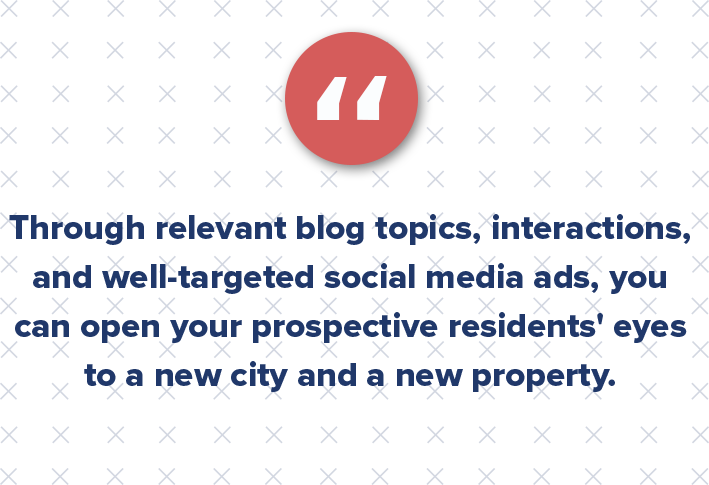
Why Is Content Marketing Still Undervalued?
The biggest misconception in multifamily inbound marketing is that content isn’t a revenue driver. Some property management teams still consider it an expense rather than a core lead generation strategy. But the reality is that content isn’t just about rankings — it’s about influence.
Content builds trust. A strong Google Business Profile with detailed posts, FAQs, and resident reviews boosts credibility. Informative videos and testimonials on a social media platform increase engagement.
A well-optimized SEO strategy ensures your property is found before competitors. And most importantly, content helps renters see themselves in your community — before they even visit.
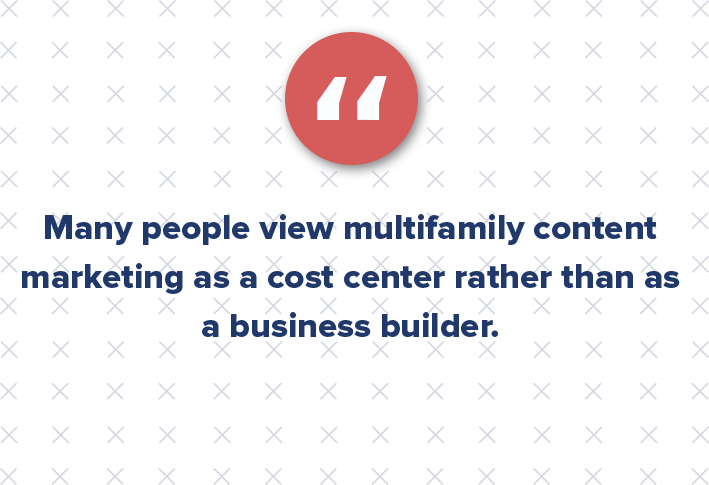
How to Build a Content Marketing Plan That Works
A successful content marketing strategy requires more than a few blog posts. Here’s what multifamily properties need to prioritize:
1. Know Your Audience, Build Your Persona
Your multifamily buyer persona determines everything: messaging, branding, social media marketing, and advertising strategy. Are you targeting young professionals, downsizing baby boomers, or remote workers? Your content must speak to their unique needs and expectations.
2. Leverage Multiple Channels
Your audience isn’t just on your website — they’re across multiple social media platforms, browsing on Google, and checking online reviews. Effective multifamily content marketing should be spread across organic search, email, video, and social media.

3. SEO + Content = Visibility
Writing great content is useless if no one sees it. Search engine optimization (SEO) is critical for long-term success. Whether optimizing for Google Business Profile, crafting data-driven blogs, or improving site structure, every piece of content should be working to increase organic traffic.
4. Prioritize Value, Not Just Promotions
Your marketing plan shouldn’t just push lease specials — it should position your property as a go-to resource. Think about content like:
- Apartment living tips
- Community guides
- Moving checklists
- Resident success stories
- Neighborhood spotlights
5. Social Media Is More Than Just Posting
Social media marketing for multifamily isn’t just about posting floorplans. It’s about storytelling. A smart multifamily branding agency will craft campaigns highlighting the multifamily brand experience, showcase resident testimonials, and engage with followers through interactive content.

Essentially, you must create great content and then adapt it across platforms. For example, a single blog post can be shared on Twitter with a snappy headline, extended to Instagram with an engaging image, and adapted to a shareable infographic.
While social networks continue to grow more visual, multifamily marketing professionals will have the opportunity to be wildly creative in their cross-platform applications.
How Do You Justify the ROI of Multifamily Marketing?
If you’re approaching your content marketing strategy correctly, you can tie your efforts directly to ROI — both qualitative (brand-focused) and quantitative (business-focused).
Let’s take Zillow, for example. Its content strategy achieves highly targeted brand goals (i.e., establishing Zillow as a storyteller within real estate) and business goals (i.e., driving traffic to its website to increase conversions). It should work the same way for your multifamily property:
- What multifamily brand goals are you trying to achieve?
- What business goals are you trying to achieve?
No matter what your business is, your content marketing actions should be driven by the questions above. Only then can you develop a roadmap with a purpose and measurable objectives.

Are You Ready for the Future of Multifamily Marketing?
We’re at an inflection point. Inbound multifamily marketing is evolving, and renters expect more. They don’t just want listings; they want an experience. The brands that succeed will be the ones that invest in content — not as an afterthought, but as the foundation of their lead generation strategy.
If your multifamily marketing still feels stuck in the past, it’s time to rethink how you connect with potential residents. Content isn’t just king anymore — it’s the entire kingdom.

How to Slay Your Multifamily Marketing Campaigns
Ever dreamt of launching a killer marketing campaign, only to get bogged down in endless email chains about flyers? Or maybe crafting fresh content feels like scaling Mount Everest while juggling resident requests?
If you’re a property manager, these scenarios are probably all too familiar.
The truth is, even the best marketing ideas can get stuck in a rut, thanks to some common pain points.
But fear not! Here’s the good news: we’re about to expose these pitfalls and offer solutions to streamline your processes and make your marketing a breeze.

1. Ordering Marketing Collateral
Imagine this scenario: You have a brilliant marketing campaign in mind, but its execution hinges on securing eye-catching flyers, high-quality brochures, and branded swag.
Sounds simple, right? Not always.
Ordering these seemingly basic materials often gets bogged down in many back-and-forth emails with vendors. You spend hours negotiating quotes, sifting through design options, and chasing approvals. When you finally get your hands on the finished product, you have lost valuable time and marketing momentum.
Solution: Consider utilizing a centralized online platform like AMP Studio by Criterion.B. This platform streamlines the marketing collateral ordering process by offering a curated selection of pre-approved marketing materials, move-in gifts, promotional items, and uniforms.
No more wading through endless vendor options or managing multiple usernames and passwords. Properties receive a unique link for ordering, ensuring standardization, quality, and cost-efficiency. Plus, AMP Studio automates communication with your internal teams for approvals and facilitates seamless billing.

2. Creating (Quality) Content
Creating fresh, engaging content that resonates with your target audience is a constant struggle. We get it. Between a million and one property management duties, who has time to become a content creation rockstar?
Here’s the good news: generative AI platforms like Gemini, Bard, and ChatGPT can be your secret weapon for brainstorming content ideas and churning out preliminary drafts. Need a blog post on the top dog-friendly cafes near your property? These AI tools can whip you up a decent starting point quickly.
But hold on a sec before you hand over the reins entirely. While AI can be a great time-saver, it can’t replace the human touch. Here’s why:
- Understanding Your Audience: AI might be able to analyze data and identify trends, but it can’t truly understand the nuances of your target audience. Human writers can tap into their experience and empathy to craft content that resonates deeper, addressing your residents’ specific pain points and aspirations.
- Injecting Personality: AI-generated content can often feel robotic and generic. Human writers, on the other hand, can infuse your brand voice and personality into the content, making it more engaging and memorable.
- Strategic Storytelling: Great content isn’t just about facts and figures; it’s about weaving a compelling narrative. Human writers excel at crafting stories that capture the reader’s attention and connect with them emotionally.
The Bottom Line: Think of generative AI as a helpful sidekick, not a superhero. Leverage its capabilities to streamline your content creation process, but don’t underestimate the power of human expertise in crafting content that resonates and drives results.
Solution: Our team of experienced writers and marketing specialists can work alongside you to develop a content calendar packed with engaging content that attracts and converts qualified leads. We’ll help you leverage industry trends and resident voices to make your content stand out, ensuring your property becomes a magnet for dream residents.
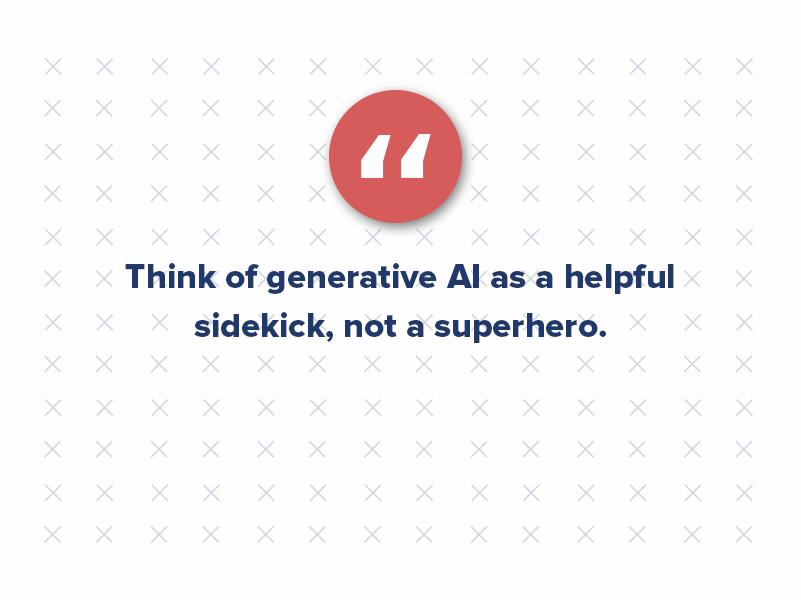
3. Tracking Analytics & Making Sense of the Data
Understanding your target audience and tracking the effectiveness of your marketing efforts is crucial. However, sifting through mountains of data from various sources can be overwhelming. With clear insights, optimizing your campaigns and allocating resources efficiently is easier.
Solution: Let Criterion.B help you navigate the data deluge. We can provide expert analysis to help you understand what’s working and what’s not in your marketing strategy. We’ll help you identify key metrics to track progress and leverage data-driven insights to optimize your campaigns for maximum impact.
4. Leveraging Social Media & Facebook Ads
Reaching the right audience with the right message at the right time can feel like a constant guessing game. Traditional marketing methods often cast a wide net, potentially wasting resources on unqualified leads. Meanwhile, social media demands constant vigilance to ensure your target audience sees your messaging.
Solution: Criterion.B can help you refine your targeting strategy and leverage the power of social media marketing and targeted advertising. We can help you create laser-focused buyer personas to ensure your marketing efforts resonate with the right people. Additionally, we can develop targeted advertising campaigns across various platforms to maximize reach and engagement.

5. Managing Multiple Vendors & Third Parties
Marketing budgets are often under constant scrutiny. Balancing creativity with cost-effectiveness can be a real balancing act. Trying to juggle multiple marketing vendors and projects can easily eat away at your precious resources.
Solution: Partnering with Criterion.B offers a cost-effective solution. Our team offers a comprehensive suite of marketing services, eliminating the need to manage multiple vendors. We work closely with you to develop a strategic plan that aligns with your budget and marketing goals.
Marketing Magic, Not Marketing Mayhem
Imagine this: you’ve nailed down the perfect marketing strategy to attract dream prospects and keep your NOI high. Now, picture yourself free from the daily marketing grind, focusing on what truly matters — managing your thriving business.
This isn’t just a fantasy. You can transform your marketing efforts from a frustrating slog to a strategic superpower by tackling these common pain points. But here’s the secret weapon: you don’t have to go it alone.
Partnering with a multifamily branding agency like Criterion.B and utilizing AMP Studio is like having a team of marketing ninjas in your corner. We’ll handle the heavy lifting — from crafting captivating content to streamlining collateral ordering — so you can focus on what you do best.
Think of it this way: a seamless multifamily marketing strategy frees up your time and resources, allowing you to invest in your business. The result? A thriving organization where prospects feel valued.
Now, that’s a win-win situation worth celebrating.

Multifamily Marketing vs. Advertising: Stop Confusing Them & Start Winning!
The digital marketing landscape constantly evolves with new tools and emerging trends. One of the hottest topics is generative AI, a powerful tool that transforms content creation and customer engagement.
But even with all these exciting advancements, a fundamental question remains: What’s the difference between marketing and advertising?
Understanding this distinction is critical to reaching your target audience. While both aim to influence people’s thoughts about your products or services, they take different approaches.
Let’s break it down and explore how generative AI plays a role in this ever-changing field.
Advertising: The Bullhorn With a Target
Think of advertising as a paid announcement. It’s a way to create buzz and let potential customers know about your offerings. Ads on social media platforms, billboards, or TV commercials are all examples. They grab attention and often tell people what to do next, like visit a website or make a purchase.
Imagine a real estate company in Dallas-Fort Worth, where construction is booming. They might use eye-catching billboards to advertise their services. These billboards act as ads, drawing attention and connecting with potential clients.
Marketing: The Mastermind Behind the Scenes
Marketing is the bigger picture. It’s a strategic plan that includes everything from figuring out your unique selling proposition (USP) to creating content and managing customer relationships. It sets the stage for impactful advertising.
Here’s how marketing helps create powerful advertising:
- Finding Your “Why”: Marketing enables you to understand what makes your company special. This unique value proposition is the foundation of all your marketing efforts, including advertising.
- Knowing Your Audience: “Buyer personas” are detailed profiles of your ideal customers. They consider age, interests, and problems your product can solve. By understanding your target audience, you can craft advertising messages that resonate with them.
- Building Relationships: Today’s consumers want a conversation. Marketing helps you create a two-way dialogue with your audience on social media platforms or through email marketing. This builds trust and loyalty, something paid advertising alone might need help.
Content Is King (and Queen)
People are more likely to pay attention to exciting content than flashy ads. Statistics show that content marketing, such as blog posts or social media content, can yield a better return on investment (ROI) than traditional advertising.
We all get bombarded with ads. The key is to make them relevant, not annoying. Here’s where targeted advertising comes in.
Digital Advertising Gets Personal
Digital advertising is no longer a one-size-fits-all approach. Enter Personalized Ads: A New Era.
With targeted ads, messages are carefully crafted to resonate with specific buyer personas, taking into account demographics, interests, and online behavior. This shift from generic advertising to hyper-personalized messaging makes ads less intrusive and more relevant, potentially transforming them from an annoyance into a useful tool.
However, successful marketing goes beyond advertising. A strong social media presence, engaging content, and excellent customer service are crucial for building brand loyalty and fostering positive customer experiences.
The digital marketing landscape continues to evolve, and businesses that can adapt their strategies to leverage the power of personalization, prioritize audience engagement across channels like social media, and deliver exceptional customer service will be the ones that thrive.
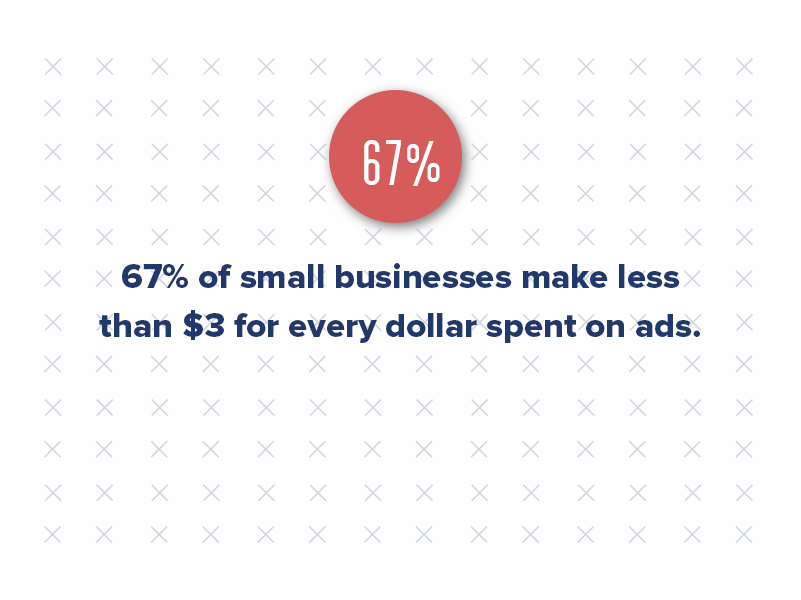
Paid Media Still Works
While content marketing is powerful, paid advertising remains valuable. It’s cost-effective and has a proven track record of success.
However, the key is to be smart about your approach. 67% of small businesses make less than $3 for every dollar spent on ads. If your ad spending often yields diminishing returns, then it’s time to rethink your marketing approach.
Here’s where a comprehensive marketing strategy comes in. By understanding your target audience and creating engaging content for them, you can lay the groundwork for successful paid advertising campaigns.
Additionally, staying on top of the latest digital marketing trends, including content creation and influencer marketing, is crucial to maximize your ad spend.
New technologies like generative AI can help you optimize your paid media efforts. AI can automate repetitive tasks like ad creation and targeting, allowing you to focus on strategic decision-making. Additionally, AI can analyze vast amounts of data to identify the most effective ad placements and messaging for your target audience.
With a well-rounded multifamily marketing strategy and leveraging cutting-edge AI tools, you can significantly improve your return on ad spend and reach your target audience more effectively.
The AI Revolution
Artificial intelligence (AI) is shaking things up in marketing and advertising. Here are some ways AI is changing the game:
- Content Creation Powerhouse: AI can create high-quality content like product descriptions and social media posts, freeing marketers to focus on more significant ideas.
- Super-Personalized Marketing: AI can analyze vast amounts of data to understand customer preferences. This allows for hyper-personalized marketing campaigns, delivering the right message to the right person at the right time.
- Marketing on Autopilot: AI can automate repetitive tasks like managing campaigns and optimizing ads, freeing marketers to focus on creative strategies that drive higher conversion rates.
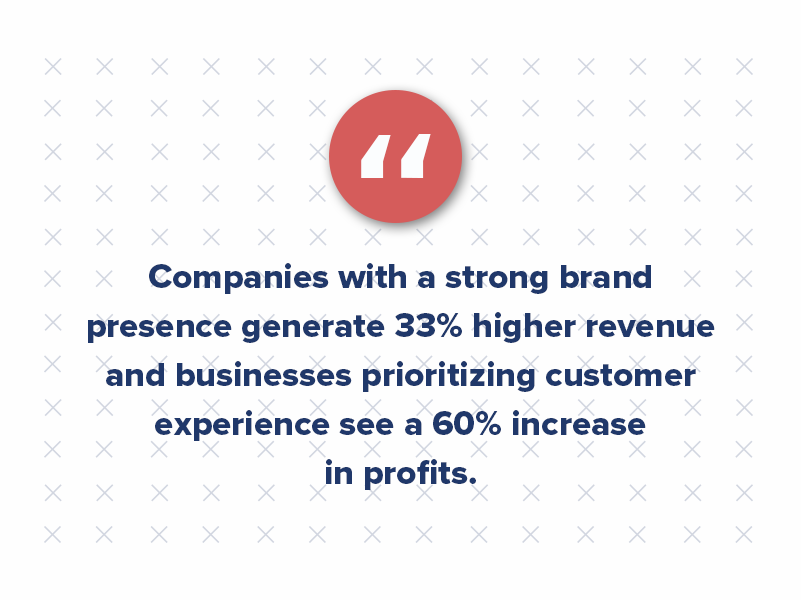
The Future Is Engaged and Data-Driven
When used strategically, marketing and advertising can be a game-changer for your business. Companies with a strong brand presence generate 33% higher revenue. Likewise, businesses prioritizing customer experience see a 60% increase in profits.
A well-executed multifamily marketing strategy that leverages AI and prioritizes audience engagement is no longer a luxury — it’s a necessity for survival and growth.
Maximizing Your Multifamily Marketing Impact With Minimal Spend
In the face of economic uncertainty, slashing marketing budgets as a quick fix is tempting. However, such reactive measures can stifle your multifamily brand’s growth and diminish its visibility. Rather than retreating, we propose a strategic pivot: making your marketing budget work smarter, not harder.
This approach is about more than just surviving tough times; it’s about finding innovative ways to ensure your brand endures and flourishes.
Here’s how to ensure your brand thrives, even when the economy is not on your side.

1. Do your own market research.
Building a strong brand begins with understanding your market. It’s like trying to give a thoughtful gift without knowing the recipient’s interests; chances are, it will fail to hit the mark. Thorough market research is your compass in multifamily branding, guiding you to create a strategy that resonates with your target audience.
The good news is you don’t need a hefty budget to gain insights into your market. The digital age has blessed us with many tools to help you conduct adequate research without breaking the bank. Here are some accessible resources to kickstart your market research journey:
- Ubersuggest: This free tool offers valuable data on search volume and cost-per-click for any keyword, helping you identify what your audience is searching for.
- Facebook Analytics: Dive into the demographic details of your current users, such as age, gender, and location, to tailor your multifamily branding efforts.
- SurveyMonkey: Create custom surveys to gather direct feedback and insights from your potential customers.
- U.S. Census Data Tools: Estimate the reach of your product or service by understanding the population demographics.
- Google Analytics: Access a wealth of statistics and analytics across your website to inform your branding strategy.
- MailChimp: Utilize this free email marketing tool to create, send, and analyze email campaigns, helping you connect with your audience effectively.
By identifying your buyer persona and understanding their needs, you can fine-tune your brand’s design elements and messaging to meet their expectations. Armed with data-driven insights, you’ll be equipped to craft a multifamily brand that stands out and genuinely connects with your audience.
2. Create and maintain a solid multifamily brand identity.
The essence of a powerful brand lies not in extravagant gimmicks but in its ability to convey a company’s mission, values, and goals with clarity and conviction. Design, while crucial, is a means to an end — the end being the creation of a resilient multifamily brand identity that resonates with your audience.
Take a moment to reflect on what you want your brand to represent. Every element of your multifamily brand, from the logo to the messaging, should be a coherent part of a larger narrative that communicates your company’s ethos and the value it brings to customers.

With a focused approach and a well-defined goal, you can build a brand identity that rivals big-budget companies without the hefty price tag. It’s about leveraging what you have to craft a multifamily brand that speaks volumes and stands the test of time.
3. Go back to the basics of print marketing.
In an era dominated by digital screens, print marketing might need to be updated. Yet, it’s precisely this shift that makes print stand out.
Recent statistics reveal the enduring relevance of print in reaching key demographics. For example, 70% of households with an income above $100,000 are newspaper readers, and 95% of individuals under 25 engage with magazines. These figures underscore the potential of print media to connect with both affluent and younger audiences.
Print media also offers a level of engagement that digital platforms need help with matching. Readers typically spend 20 minutes or more immersed in their print publications, whereas the average visitor to a digital news site stays for less than five minutes. This extended exposure time can be invaluable for multifamily brands looking to make a lasting impression.
Print ads also have a cognitive advantage, requiring 21% less effort to process than their digital counterparts. This ease of comprehension can lead to higher retention and recall rates, making print an effective medium for conveying complex messages or detailed information.
Did you know that integrating print with digital campaigns can supercharge your marketing efforts? Studies suggest combining print and digital ads can make online campaigns 400% more effective, demonstrating the synergistic potential of a multi-channel approach.
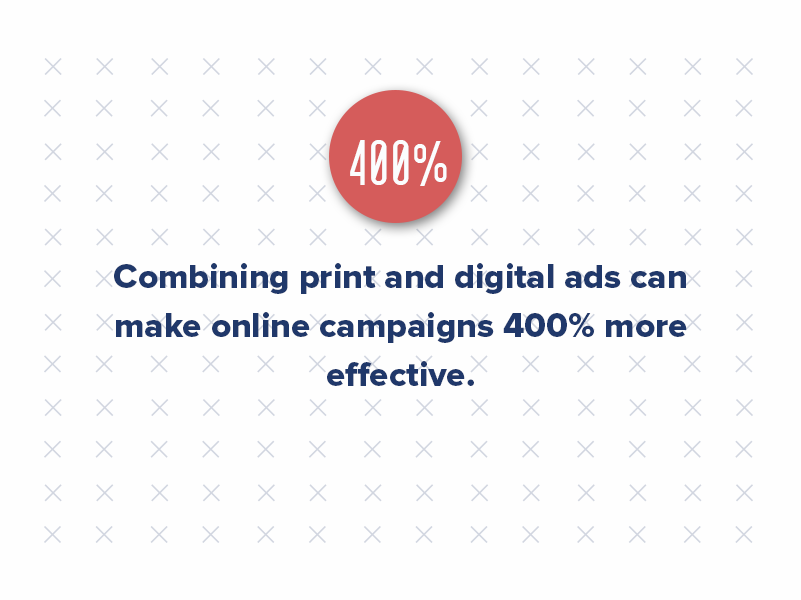
Guerrilla marketing tactics, like distributing eye-catching flyers, can cost-effectively create a buzz. It’s about capturing attention in the real world, sparking conversations, and encouraging people to share their experiences. Remember, tangible interactions can leave a lasting impression in a digital age, and word-of-mouth remains a powerful, cost-free marketing tool.

4. Leverage social media (the right way).
Social media offers an expansive yet affordable platform to promote your brand. The key is to focus on quality over quantity. Create content that genuinely resonates with your audience, whether it’s through informative posts, engaging Stories, or interactive polls.
Consistency and timing are crucial. Post regularly, but also strategically, to maximize visibility without overspending. Use analytics to track your performance and refine your strategy based on what works. For example, pay close attention to your audience analytics to know which days and times they are most active online.
5. Encourage word-of-mouth and user-generated content (UGC).
There’s immense value in organic growth driven by word-of-mouth and UGC. Encourage your satisfied customers to share their positive experiences, whether through reviews, social media posts, or referrals. This enhances your brand’s credibility and extends your reach without additional advertising costs. A well-thought-out referral program can further incentivize customers to become multifamily brand advocates.
6. Take advantage of email marketing.
Email marketing continues to be a powerhouse for direct communication with your audience, offering an excellent ROI even with a limited budget. Here are some tips to maximize its potential:
- Segment Your Audience: Segmented emails drive 30% more opens and 50% more click-throughs than unsegmented ones, according to HubSpot. Tailor your messages by segmenting your email list based on demographics, behavior, or their history and interactions with your multifamily brand. This ensures your content is relevant and engaging to each subgroup.
- Personalize Your Emails: Go beyond just using the recipient’s name. Customize content based on their preferences, past interactions, and needs to increase open and click-through rates.
- Craft Compelling Subject Lines: Your subject line is your first impression. Make it catchy, clear, and concise to entice recipients to open your email.
- Optimize for Mobile: With most emails being opened on mobile devices, ensure your design and content are mobile-friendly.
- Use Automation: Automate welcome emails, birthday greetings, and follow-up messages to keep your multifamily brand top of mind without constant manual effort.
- Monitor and Adjust: Regularly analyze your email campaign’s performance. Look at open rates, click-through rates, and conversions to identify what’s working and needs tweaking.
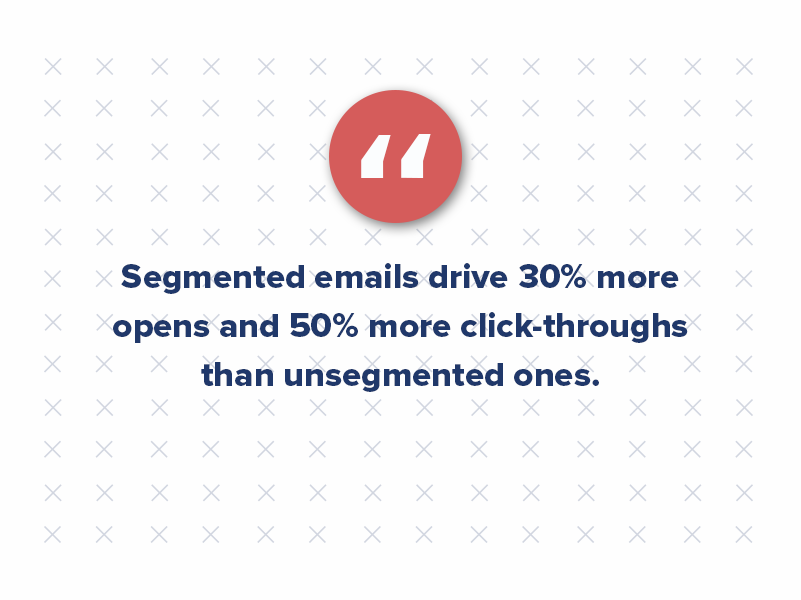
By leveraging these strategies and free email automation tools, you can create effective email marketing campaigns that build strong customer relationships and drive business growth, all while keeping costs in check.
7. Network, collaborate, and get involved in the community.
Building partnerships with other businesses and engaging with your community can open doors to cost-effective marketing opportunities. Consider co-marketing initiatives that benefit both parties, such as joint events or cross-promotions. Participate in local events, contribute to industry publications, and collaborate with like-minded organizations.
Connecting with property management software companies can be particularly beneficial for those in the multifamily sector. PMS companies are asked more often than any other company, “Who should I use for this service? Who does my background checks?” etc. Their salespeople become a referral engine for vendors and affiliate companies in the multifamily space.
Seize the Moment to Thrive in ‘25
As we navigate the mantra of “Survive until ’25,” it’s clear that the multifamily landscape is at a crossroads. While some may view this period as a time of mere endurance, others see it as an opportunity to redefine and invigorate the industry. Unlike any we’ve seen in recent years, the emergence of a buyer’s market signals a shift that could breathe new life into the sector. Yet, the exact timing of this transformation remains uncertain.
In this climate of anticipation, our approach should not be limited to mere survival. Instead, it’s about proactively seeking ways to thrive, even in the face of budget constraints. We can leverage our marketing resources to make a tangible impact by embracing creativity and strategic thinking. Whether it’s through innovative print marketing, targeted social media campaigns, or fostering community engagement, the goal is to find avenues that propel our multifamily brands forward.
This mantra is a call to endure and an invitation to excel. It’s about seizing the opportunities that arise, navigating the challenges with agility, and using every tool at our disposal to ensure that our brands survive and thrive when the industry rebounds.
The True Value of a Qualified Lead in Multifamily Marketing
For commercial real estate marketing professionals, adapting to the rapid shift toward digital methods is both challenging and essential. Traditional property marketing techniques, honed over decades, are familiar to many. Yet, the evolution of the commercial real estate market trends points unmistakably toward the burgeoning significance of online platforms and digital outreach.
Navigating this digital realm can often feel like venturing into uncharted territory. While old marketing methods are quickly embraced due to years of experience, commercial real estate digital marketing strategies often face skepticism. These modern strategies’ tangible benefits and efficiencies, such as lower implementation costs, are frequently overshadowed by doubts and resistance. This evolving scenario poses a unique problem for multifamily marketing managers attempting to position themselves at the forefront of real estate marketing strategy innovation.
So, how can one effectively convey the value of a lead, especially a qualified apartment lead, within this digital framework? The challenge might seem daunting, but understanding and leveraging the potential of digital tools is crucial for marketers determined to stay ahead in the game.
The Quantitative: Doing the Math
When navigating the intricacies of multifamily marketing, one of the foremost concerns that real estate agents and marketers face is justifying the costs to their executive team. While these teams frequently zoom in on ROI as the primary measure of success, a holistic view of marketing efforts suggests this isn’t the only metric that matters.
Why? Understanding the ROI in the world of real estate marketing requires a deep dive into the needs and behaviors of the target audience. Further complicating matters, there are numerous ways to calculate marketing ROI, each offering unique insights tailored to different real estate marketing ideas.
For those deeply entrenched in commercial real estate marketing, the prevalent method to gauge ROI is the “cost per lead.” But here’s where many face a problem: Does this metric encompass all leads, or does it specifically address qualified leads? If you’re using a real estate website to generate leads, search engines can often bring a mix of visitors, not all of whom are part of your target market. When examining the broad spectrum of all leads, the cost-per-unqualified lead will invariably seem more economical.
However, a closer look reveals the nuances. Many of these leads, especially those seeking properties like office space or virtual tours of property listings, might not align with what’s being offered, making them a less-than-ideal fit or not ready to purchase.
This initial cost, often deceivingly attractive, fails to factor in the lead’s position in the buyer’s journey, whether they’re just becoming aware or on the brink of making a decision. Consequently, this metric overlooks essential expenses, such as the costs of nurturing these leads through tailored marketing strategies or the eventual sales pitch.
Cost Per Lead
However, the standard “cost-per-lead” is likely a sufficient metric for companies playing the lead generation game. That formula is simple enough. You take the marketing spend and then divide it by the number of leads.
Marketing Spend / Total New Leads = Cost Per Lead (CPL)
But depending on your end goals, this may not be the number your executive team wants. They may be more interested in your cost per marketing qualified lead (MQL) — or a lead ready to go to sales. This number is not too complicated, either.
Divide the marketing tactic spend by the number of MQLs you got through that method. That’s your MQL cost. Not tracking MQLs? You will not be able to backtrack your MQLs, but we have some tips on setting up your lead qualification for the future.
Marketing Tactic Spend / Total New MQLs = Cost Per MQL
This metric will likely garner better interest than a standard cost per lead, but executives will likely want more. This is where “return on spend” comes in, which shows the actual value of your efforts by relaying how those efforts impacted your bottom line. In other words, it’s the amount you earn in the business compared to your spend. This number is much harder to get; however, it can be a significant selling point in convincing your boss of the value of your efforts.
First, you must know the lifetime value of your customers.
Lifetime Value
Calculating the lifetime value of your customer is simple enough, but your formula will vary based on the nature of your product or service. If you are a subscription-based service, you will want to know the average monthly spend of a customer. If you offer a one-time product or service, you must consider typical upsells, which can increase your averages. There’s no simple formula, but once you go through this process with your sales data, you should be able to come up with a reasonable average.
The next step is to look at conversion rates of qualified leads — namely, how many marketing-qualified leads become sales-qualified leads and the average close rate of a sales-qualified lead. Got that number? You are going to use it to calculate the MQL value.
MQL Value
The MQL value is vital because it benchmarks how much an MQL should be worth. It’s also key in calculating return on spend. With this number and your cost per MQL, you can calculate the return on any marketing spend — email campaign, social media ad, etc. It’s as simple as dividing the MQL value by the cost per MQL
MQL Value / Cost Per MQL = Return on Spend
This number can help commercial real estate marketers justify marketing endeavors. However, it’s not the only one you should look at. A better snapshot number could be “return on campaign,” which looks at your endeavors. Much like a standard ROI number, return on campaign operates on similar calculations, but while looking at the components of your marketing campaign over the set time it ran.
Traditional ROI computations look like this:
(Sales Growth – Marketing Cost) / Marketing Cost = Return on Investment
However, with campaigns in mind, there are often different or additional costs involved, and not all sales may result from the campaign. If you run a single campaign at a time, you could modify this calculation to reflect any natural growth you see on average.
(Sales Growth – Marketing Cost) / Marketing Cost – Avg. Organic Growth = Return on Campaign
This gives you a more standard return that executives are used to interacting with. However, if you run multiple campaigns simultaneously, you can calculate individual returns on each campaign by taking a more roundabout approach. This involves looking at customers acquired from the campaign and multiplying the average sales and margin. Then, you subtract your campaign budget. This gives a more accurate number as to the contributory effect of each campaign.
(# Campaign Customers * Avg. Sale Amt. * Avg. Margin) – Campaign Budget = Return on Campaign
These numbers may not be simple to master or even remember; however, they’re a great way of proving marketing’s worth to your executive team.
The Qualitative: Remembering the Immeasurable
People like numbers because they are easily digestible. A number tells a simple story. But a number can also be manipulated. And a number doesn’t always tell the full story. Often, having numbers is not enough — you also need a narrative. This is where “qualitative” value comes in.
A great return on spend will undoubtedly do well to impress your C-suite with your marketing efforts. But what if you told them you also could decrease your sales cycle by a few months? That would garner strong attention as well. This is just one example of qualitative value when discussing your marketing endeavors — and the unexpected benefits of running a solid digital marketing campaign.
Digital Marketing Is Iterative
Another positive qualitative value? Certain parts of a digital marketing strategy are iterative. Commercial real estate marketers may need to develop new content or web pages for campaigns, but much of the groundwork is already done. And most of it will not need to be done again. Or at least not soon.
Buyer personas and the associated buyer’s journey may need adjustments over time. However, none of that will compare to the initial costs of developing these items. This means that over time, your ROI will likely decrease, as the costs of these components can technically be spread across each campaign. It’s hard to calculate this as a number, but it certainly goes into ascribing value to the lead process.
Qualified Leads for Commercial Real Estate Marketers
The biggest qualitative value that inbound offers is qualified leads. Traditional marketing methods gather unqualified leads sent to sales — or worse, cold-calling. On the other hand, inbound marketing puts a process in place that qualifies leads naturally through offers and nurture campaigns.
This systematically improves the marketing process, allowing leads to qualify themselves as you push out more content. In turn, you shorten the time and resources the sales team spends qualifying leads. This means commercial real estate marketers’ qualified leads from the inbound process cost less than the qualified leads you get through another method.
The Bottom Line of Lead Value
So, what does this mean for commercial real estate marketers?
Pulling it all together, a digital marketing program like multifamily inbound marketing allows you to ascribe worth to the apartment leads you gather easily. Multifamily inbound marketing also enables you to prove that the costs and returns associated with those leads are of greater value to your business than leads garnered from more traditional methods.
In coupling calculations like return on spend, you can prove your leads’ quantitative and qualitative value. As we noted previously, inbound marketing offers improved cost-per-lead values and lower implementation costs. But it’s one thing to know it and another thing to prove it to your executive team.
The Rise and Importance of Video Marketing in Your Multifamily Marketing
Reflect on the most engaging content you’ve encountered on social media lately. Which pieces left a lasting impression, prompting you to share or tag a friend?
The undeniable force behind these memorable moments is video content. Whether it’s an amusing pet mishap, an informative tutorial, or an innovative DIY project, videos have an unrivaled power to captivate.
U.S. adults, on average, dedicate six hours daily to watching videos, and this watch time has skyrocketed by over 270% in the past year. Research indicates that more than half (54%) of consumers want to view more video content from their favored brands or businesses. Remarkably, 86% of companies now leverage video for marketing, a significant jump from 63% a few years ago.

These striking statistics underscore the substantial potential of video content marketing, especially in the multifamily marketing landscape. Now is the perfect moment if you haven’t yet integrated a robust video marketing strategy.
Why Is Video Content Marketing Important?
Search engines love fresh and engaging content, and nothing fits the bill quite like creating videos. In today’s digital age, landing pages, blog posts, and other online spaces are instantly elevated when you include video. The type of video matters, too. For instance, an “explainer video” can help break down complex concepts, while a product video shines a spotlight on the unique features of your products and services.
With many video and social media platforms available, there’s never been a better time to experiment with video ads, live videos, and other video formats.

In our fast-paced digital world, consumers search for content that offers instant gratification. Videos perfectly meet this demand, enabling brands to encapsulate their core message in a short yet impactful format. When you add video to your marketing mix, it’s not just about visuals; it’s about building genuine relationships with your audience.
The art of promoting your video has also become more accessible and budget-friendly, thanks to evolving technology. Now, multifamily marketers can benefit from precise targeting on video platforms and receive in-depth analytics, making it an indispensable marketing tool. Plus, with the option to share videos widely, you increase the chances for potential customers to watch your video and connect with your brand.
Effective Content for Your Video Marketing Strategy
Understanding and integrating the importance of video within your multifamily marketing framework is crucial, but it’s just the beginning. Determining which video formats and styles align best with your business objectives can be challenging.
To navigate this landscape, here are some video marketing tips to optimize your strategy for the multifamily sector:
1. Live Streaming and Reels
Social videos are short, conversational clips explicitly designed for social media. From live streaming on Facebook to Instagram Stories, brands can cast a wide net around prospective customers and reel them in with captivating content. Given the transient attention span on social media, these videos should ideally be condensed, gripping, and under two minutes.

Embrace live videos, as these can be utilized for property tours, resident events, or Q&A sessions. Live interactions build authenticity and foster a deeper connection with potential residents.
2. Brand vs. Product
Brand videos offer a high-level overview of your company’s brand, mission, and style. This content can be clips of your office and showcase company culture, but it should not sell a product. You should consider a brand video as your mission statement.
Product videos, conversely, educate your audience about the benefits of your product or service. With this content, it is essential to highlight and explain customer benefits and not just the features.
Ensure you’ve added video components, landing pages, and promotional materials to your website. This enriches the user experience and positions your brand as current and responsive to digital trends.
3. Testimonials and Customer Spotlights
Customer spotlight or testimonials showcase one of your customers and how they benefited from your product or service. These videos offer a great alternative to your website’s traditional written testimonial.

At Criterion.B, we have seen word-of-mouth communication as a powerful force — especially when building brand trust. Trust is built organically by spotlighting real customers and narrating their positive experiences, making this a vital aspect of multifamily marketing. Your prospective customers will trust the opinions of your current customers more than they trust your website content, blog, or advertisements. Video testimonials are an authentic way to capture your customer’s feedback and potentially drive more multifamily leads to your business.
4. Trending Videos
As with all marketing endeavors, staying abreast of the latest video trends and innovations is crucial. Whether it’s new editing techniques, emerging platforms, or innovative content ideas, being in the know ensures your strategy remains competitive.
Trending videos leverage a trending or timely topic at the core, whether it’s a clip related to a holiday, an upcoming election, or just a hot topic within your industry.
For example, we developed a video on the importance of building buyer personas, featured during a panel discussion at NAA Apartmentalize. The clip was timely (for the event), trending (within the multifamily market), and relevant to all of our buyer personas. Watch the full video below!
5. Interactive Content
Interactive videos offer viewers a unique, participatory experience. You turn passive viewers into active participants by embedding quizzes, polls, or clickable links. This heightened engagement ensures better retention and provides invaluable feedback. In multifamily marketing, interactive content can virtually tour potential properties, allowing viewers to choose which areas of a residence they’d like to see or even select finishes and furnishings in real time.
6. SEO Video Marketing
Your video’s content is only as effective as its discoverability. SEO video marketing is vital. Ensure your video titles, descriptions, and tags are optimized with relevant keywords. Moreover, to make your content inclusive, provide subtitles or closed captions. This not only aids viewers with hearing impairments but also caters to those who watch videos without sound, which is a significant portion of viewers, especially on social media platforms.
Integrating these video marketing tips can further elevate your multifamily strategy, ensuring you reach a broader audience while providing engaging and valuable content. Remember, in today’s digital age, it’s not just about producing videos — it’s about creating videos that resonate, inform, and inspire.
5 Ways Video Content Can Drive Multifamily Website Traffic
With “doom scrolling” rising, capturing and maintaining a visitor’s attention on your website can be a significant challenge. However, integrating videos into your web content offers an effective solution. Here’s how:
1. Enhance Your User Engagement
Embedding videos in your blog posts or web pages can dramatically increase user engagement. Instead of skimming through a lengthy article, viewers can watch a video that summarizes or complements the content. This multimedia approach appeals to a broader range of learning styles — while some might prefer reading, others gravitate toward visual or auditory content.
2. Increase the Average Time on Page
One of the crucial metrics search engines use to gauge the quality and relevance of a page is the amount of time a user spends on it. A compelling video can keep visitors on your page for extended periods, signaling to search engines that your content is valuable. This can subsequently improve your site’s search engine ranking, making it easier for potential customers or readers to discover your content.
3. Reduce Bounce Rates
A “bounce” occurs when a visitor lands on a page on your website and leaves without interacting with any other part of your site. A high bounce rate can negatively impact your SEO ranking. Videos, with their innate ability to captivate, can mitigate this. By embedding a video, you’re giving visitors an additional reason to stay and explore, reducing the likelihood of a bounce.
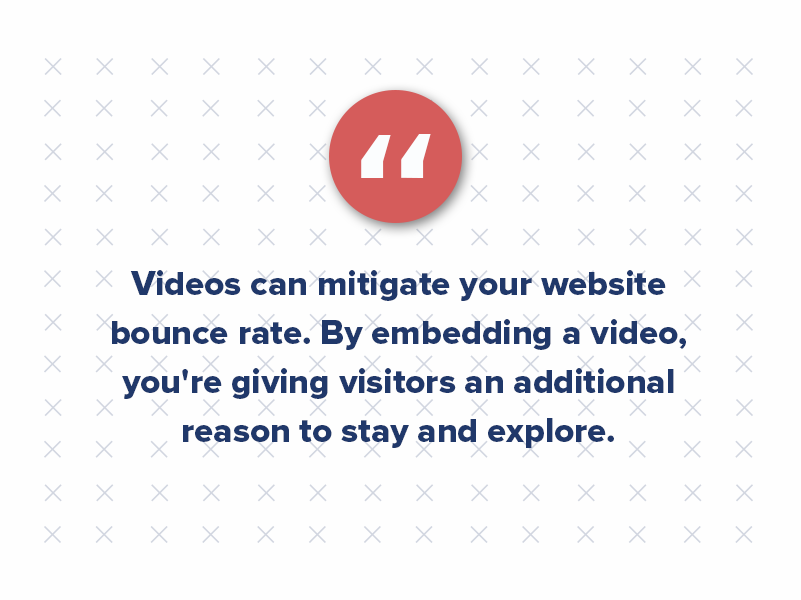
4. Boost the Shareability of Your Site
Video content is inherently shareable. Visitors who find your video insightful, entertaining, or valuable are likelier to share it on social media platforms or with their network. Every share increases the potential for more traffic to your website, creating a virtuous cycle of engagement and discovery.
5. Improve Your Content Diversity
A diverse content strategy appeals to a wider audience. By embedding videos in your blog posts, you’re catering to those who prefer watching over reading. This diversity can make your website a go-to resource for information, ensuring repeat visits and consistent traffic.
Captivate Your Customers With SEO Video Marketing
While social media videography plays a crucial role, broadening your scope to include video across your website, landing pages, and emails is vital. Don’t limit yourself to just one type of video. From explainer videos detailing your amenities to animated infographics showcasing resident testimonials, diversifying your video formats can cater to varied audience preferences and increase engagement.
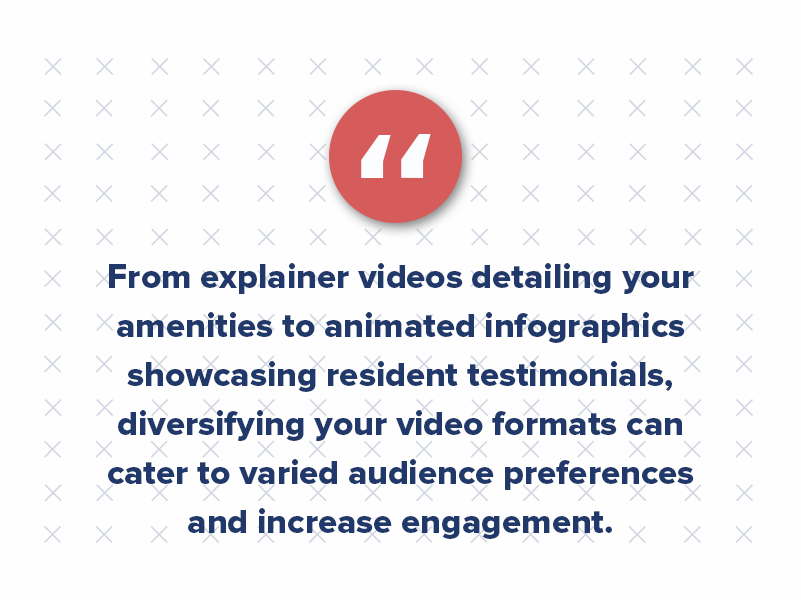
Delving into the benefits of video marketing reveals that it doesn’t just enhance engagement; it boosts SEO rankings, fosters trust, and increases conversion rates. Video marketing tips can help businesses optimize their content for SEO video marketing, ensuring their videos rank higher and reach a broader audience.
While the concept of branded video content’s immense multifamily marketing potential isn’t novel, its soaring popularity among consumers and its heightened significance to marketers certainly is. To stay competitive and resonate with your audience, harnessing this trend is no longer optional but imperative.




